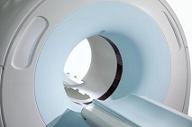Advertisment
Despite obstacles, fine needle aspiration might be best diagnostic tool

Screening for lung cancer with low dose CT scans has been shown to save lives. However, research shows that when CT scans reveal nodules in the lungs, it is not cancerous 96 percent of the time. As a result, scientists are looking for ways to more accurately make a diagnosis. One way is by using a CT guided transthoracic fine needle aspiration. Research presented in the May 2012 issue of the International Association for the Study of Lung Cancer’s (IASLC) Journal of Thoracic Oncology shows that this highly sensitive technique might be the best way to diagnose pulmonary nodules.
Researchers studied 170 patients between January 2002 and December 2004 who had initial benign results. Eighteen of the patients who had the fine needle aspiration (FNA) turned out to have cancer, meaning the FNA biopsy presented a false negative. The authors of the study explain that “false negatives tended to occur in larger lesions.”
They “speculate that the portion of the lesion with malignant cells was likely part of a larger consolidation, making it difficult to distinguish the primary lesion from surrounding atelectasis or inflammation.” Other reasons for false negatives include the number of imaging adjustments that were made for each needle pass during the biopsy and the expertise of the radiologist. “While both radiologists were experienced with CT FNA, the operator with the lower incidence of false negatives had more years of experience with the procedure and performed more biopsies overall.”
In conclusion, the researchers recommend that patients with benign FNA biopsies have repeat imaging for at least two years following the procedure to observe if there is any growth. Despite that, FNA seems to be a way patients can avoid unnecessary surgery and still achieve a diagnosis.
The lead author of this work is Dr. Brian Gelbman. IASLC member co-authors include Dr. Jeffrey Port and Dr. Nasser Altorki.





